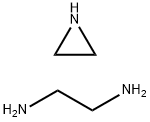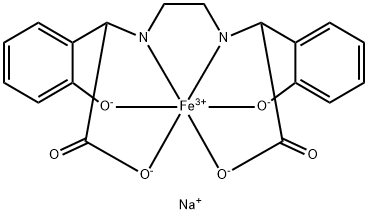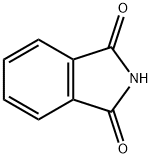polyethyleneimine
- CAS NO.:25987-06-8
- Empirical Formula: C4H13N3
- Molecular Weight: 103.17
- MDL number: MFCD00084427
- EINECS: 247-038-6
- SAFETY DATA SHEET (SDS)
- Update Date: 2024-12-18 14:15:32

What is polyethyleneimine?
Chemical properties
Polyethylenimines (PEI) are low to high molecular weight compounds with the general formula -[CH2-CH2-NH2]-, made by ring opening polymerization of aziridine. These polymers are available as linear, partly branched or repetitively branched polymers (dendrimers). The linear form contains only primary amines in the backbone whereas branched PEI also contains secondary and tertiary amines. Thus, these polymers have different properties and reactivities. Linear high MW PEI is usually solid at room temperature while branched PEIs are typically liquids at all molecular weights. All three forms are soluble in water, methanol, ethanol, and chloroform but insoluble in solvents of low polarity such as benzene, ethyl ether, and acetone.
The Uses of polyethyleneimine
Polyethyleneimine is a synthetic, water soluble, linear or branched polymer that has a high density of amino groups that can be protonated. At physiological pH, the polycation is very effective in binding to DNA and can mediate the transfection of eukaryotic cells. It is widely used in gene delivery system due to the ability to build a complex with DNA and support the release of endosomal through “proton sponge effect.” It is also facilitating the intracellular transport into nucleus. These properties succeed in polymer for MNPs coating and targeted therapy.
What are the applications of Application
Detergents, adhesives, water treatment, printing inks, dyes, cosmetics, and paper industry, adhesion promoter, lamination primer, fixative agent, flocculant, cationic dispersant, stability enhancer, surface activator, chelating agent, scavenger for aldehydes and oxides.
Properties of polyethyleneimine
| Density | 1.08 g/mL at 25 °C |
| vapor pressure | 9 mm Hg ( 20 °C) |
| refractive index | n |
| Flash point: | >230 °F |
| solubility | Chloroform (Sparingly), DMSO (Sparingly), Methanol (Slightly) |
| form | Oil |
| color | Colourless |
| InChI | InChI=1S/C2H8N2.C2H5N/c3-1-2-4;1-2-3-1/h1-4H2;3H,1-2H2 |
| EPA Substance Registry System | 1,2-Ethanediamine, polymer with aziridine (25987-06-8) |
Safety information for polyethyleneimine
| Signal word | Danger |
| Pictogram(s) |
 Corrosion Corrosives GHS05  Exclamation Mark Irritant GHS07  Environment GHS09 |
| GHS Hazard Statements |
H302:Acute toxicity,oral H318:Serious eye damage/eye irritation H411:Hazardous to the aquatic environment, long-term hazard |
| Precautionary Statement Codes |
P273:Avoid release to the environment. P280:Wear protective gloves/protective clothing/eye protection/face protection. |
Computed Descriptors for polyethyleneimine
| InChIKey | SFLOAOINZSFFAE-UHFFFAOYSA-N |
| SMILES | C(N)CN.C1NC1 |
New Products
Tert-butyl bis(2-chloroethyl)carbamate (S)-3-Aminobutanenitrile hydrochloride N-Boc-D-alaninol N-BOC-D/L-ALANINOL N-octanoyl benzotriazole 4-Hydrazinobenzoic acid 3,4-Dibenzyloxybenzaldehyde Electrolytic Iron Powder 1,1’-CARBONYLDIIMIDAZOLE R-2-BENZYLOXY PROPIONIC ACID 4-HYDROXY BENZYL ALCOHOL 1,1’-CARBONYLDI (1,2-4 TRIAZOLE) S-2-CHLORO PROPIONIC ACID (2-Hydroxyphenyl)acetonitrile 4-Bromopyrazole 5-BROMO-2CYANO PYRIDINE 5,6-Dimethoxyindanone 5-broMo-2-chloro-N-cyclopentylpyriMidin-4-aMine 3-(Hydroxymethyl)benzoate N-Boc-2-chloroethylamine 1-Bromo-2-methoxy-3-nitrobenzene N-Methyl-3-cyclopenten-1-amine 2-Bromo-3-hydroxybenzaldehyde 1H-indazole-5-carboxamideRelated products of tetrahydrofuran








You may like
-
 Polyethylenimine, branched CAS 25987-06-8View Details
Polyethylenimine, branched CAS 25987-06-8View Details
25987-06-8 -
 7441-43-2 98%View Details
7441-43-2 98%View Details
7441-43-2 -
 1260741-78-3 6-Bromo-3-iodo-1-methyl-1H-indazole 98%View Details
1260741-78-3 6-Bromo-3-iodo-1-methyl-1H-indazole 98%View Details
1260741-78-3 -
 4-bromo-3,5-dimethylbenzenesulfonyl chloride 1581266-79-6 98%View Details
4-bromo-3,5-dimethylbenzenesulfonyl chloride 1581266-79-6 98%View Details
1581266-79-6 -
 2490430-37-8 98%View Details
2490430-37-8 98%View Details
2490430-37-8 -
 N-(5-Amino-2-methylphenyl)acetamide 5434-30-0 98%View Details
N-(5-Amino-2-methylphenyl)acetamide 5434-30-0 98%View Details
5434-30-0 -
 124371-59-1 98%View Details
124371-59-1 98%View Details
124371-59-1 -
 53857-52-2 98%View Details
53857-52-2 98%View Details
53857-52-2